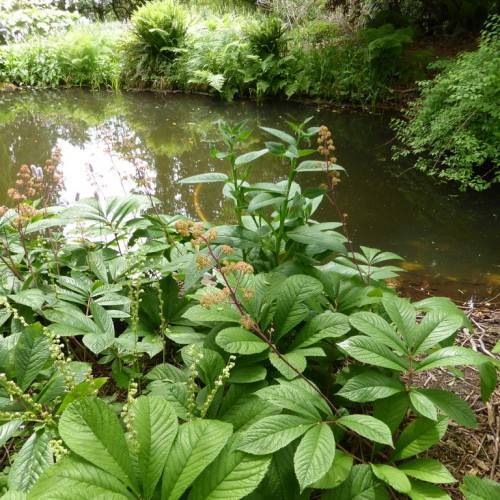
elderberry rodgersia
Rodgersia sambucifolia
Cycle:
Herbaceous Perennial
Watering:
Frequent
Hardiness Zone:
4 - 7
Flowers:
Flowers
Sun:
Full sun,part shade
Leaf:
Yes
Growth Rate:
Low
Maintenance:
Moderate
Drought Tolerant:
Yes
Care Level:
Medium
watering
Elderberry rodgersia should be watered regularly but not too often. The soil should be kept moist but not soggy. Water deeply but infrequently, saturating the soil to a depth of 12 to 15 inches (30 to 38 cm). Water when the top 2 to 3 inches (5 to 7 cm) of soil begins to dry. If the plant is in a container, water when the surface of the soil is dry. In hot summer months, the plant may need to be watered twice a week. Elderberry rodgersia are drought tolerant plants, so do not over water. Inadequate amount of water can cause leaf wilting.
sunlight
Elderberry rodgersia (Rodgersia sambucifolia) is a plant species which grows best when exposed to direct sunlight for at least 4-6 hours per day. The number of hours of sunlight required for optimal growth can vary depending on the season and climate. During the summer when days are longer, elderberry rodgersia can expand its leaves and branches to collect more sunlight. During the spring and shorter fall days, however, the amount of sunlight should be limited to a 4-6 hour period to prevent excessive leaf burning. When growing indoors, elderberry rodgersia needs plenty of bright sunlight. A bright, south-facing window with at 6 hours of direct sunlight is ideal.
pruning
Elderberry rodgersia (Rodgersia sambucifolia) should be pruned once a year in early spring before any new growth appears. This pruning will help the shrub to maintain its form, remove dead wood, and prevent overgrowth. Pruning should remove about 20-30% of the overall canopy of the shrub. The goal should be to thin dense growth and remove any branches that cross over each other and any that rub against each other. Pruning should be done carefully, taking care not to cause any damage or disfigure the shrub. Dead branches should be cut close to the trunk and as much as possible of the remaining limb should be left in place.
